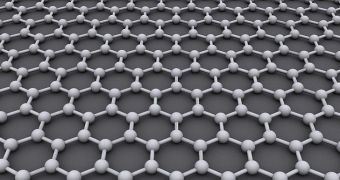In what must be one of the greatest achievements on the tech industry yet, Samsung has figured out how to use graphene in products, finally. Unfortunately, this might not lead to super personal computers after all.
Graphene is a sort of fix-all, wonder material, which can enable super-fact processors, very capacious and fast storage devices, ultra-fast connectors, etc.
Unfortunately, it has, so far, only been restricted to lab experiments, and its many assets stayed on the far side of theoretical.
Until last week, when Samsung revealed it had figured out how to use it in products, by means of a method that synthesizes large-area graphene into a single crystal.
Said crystal can then be put on a semiconductor and used to make transistors, which was the step needed before processors could be made from it.
The only obstacle was that, before, the material didn't maintain its electrical and mechanical properties. The graphene crystal does.
For those who want to know more about the method used to make graphene transistors, Samsung Advanced Institute of Technology collaborated with Sungkyunkwan University in South Korea on it.
They used a normal silicon wafer with Germanium substrate and made a monolayer mono crystal graphene impression on it. Afterwards, they removed the wafer and germanium from below (which can be reused, amazingly enough, ensuring massive mass production capabilities).
Finally, thanks to the dry process used to remove the graphene from the Germanium, the former is left with very few defects.
So, in theory, graphene could provide that extra speed needed to go around the regular need for more transistors and cores.
Normally, this would be the point where the world begins to gush over the many possibilities now open before us.
Graphene could revolutionize computing after all, enable ultra-fast PC processors and storage devices, bring a new age of interconnects, etc.
Unfortunately, it's looking as though Samsung does not intend to do any of this. Instead, it means to use the graphene transistor in wearable gadgets, of all things.
Granted, small, mobile processors do seem to be performance-challenged, and it's not like you can include more transistors when you have space concerns to satisfy. And Samsung doesn't make PC CPUs anyway.
Alas, when you factor in the fact that a graphene transistor can be clocked at 500 GHz, it starts to look like something of a waste.
It's true that Samsung is a mobile company, so using graphene-based technology in its phones, tablets and wearable devices (like smartwatches) makes sense to it. But the breakthrough could open a whole new world for desktop computers.
Alas, we will have to wait until Intel and/or Advanced Micro Devices adopt graphene technology before that happens.

 14 DAY TRIAL //
14 DAY TRIAL //